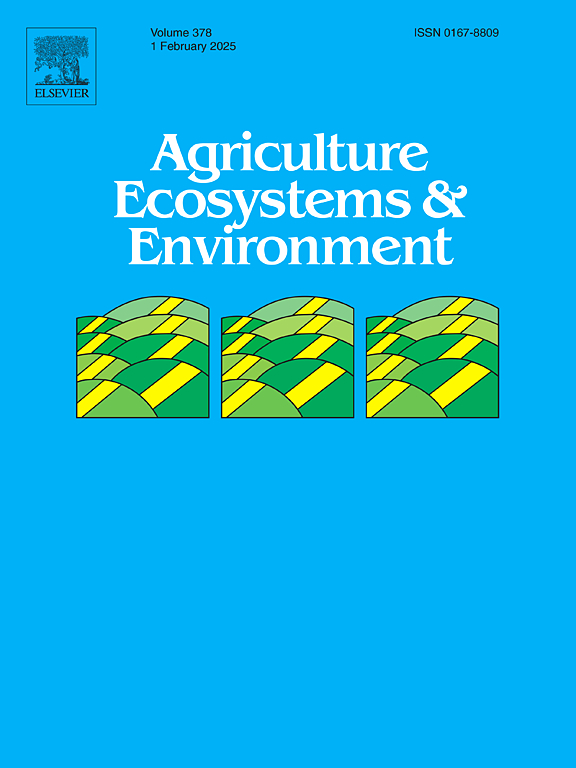Impact of grazing on plant species and functional community structure in Tibetan alpine grasslands: Implications for plant diversity conservation
IF 6
1区 农林科学
Q1 AGRICULTURE, MULTIDISCIPLINARY
引用次数: 0
Abstract
Understanding how grazing influences plant diversity and spatial distribution is essential for evaluating the ecological consequences of grassland restoration, especially in sensitive alpine ecosystems (e.g., Tibetan Plateau). This study assessed the impact of grazing on plant species and functional α- and β-diversity using data from 16 paired grazed and fenced plots across a transect in Tibet. Overall, grazing led to a decline of 9.77 % in species α-diversity (Simpson index) and 11.50 % in functional α-diversity, while β-diversity decreased by 4.75 % and 10.03 %, respectively. According to the intermediate disturbance hypothesis, the current grazing intensity in Tibet might not be the optimal level. Spatially, grazing homogenized the latitudes and longitudes patterns of species and functional α-diversity. Grazing often promoted α-diversity at higher altitudes, but decreased it at lower altitudes. The difference in community composition between fencing and grazing conditions at the same site (varied with geographic location. There were differences in the spatial distribution patterns between species and functional , likely due to differing dominant factors. Therefore, fencing may be less effective in preserving biodiversity at relatively high elevations, but it can still be a feasible method at relatively low elevations. Functional diversity and β-diversity may be more sensitive than species diversity and α-diversity, respectively, indicating more attention should be paid to functional β-diversity in terms of biodiversity conservation.
放牧对西藏高寒草原植物物种和功能群落结构的影响:对植物多样性保护的启示
了解放牧如何影响植物多样性和空间分布对于评估草地恢复的生态后果至关重要,特别是在敏感的高山生态系统(如青藏高原)中。本研究利用西藏样带16个放牧和围栏样地的数据,评估了放牧对植物物种和功能α-和β-多样性的影响。总体而言,放牧导致物种α-多样性(Simpson指数)和功能α-多样性分别下降9.77 %和11.50 %,β-多样性分别下降4.75 %和10.03 %。根据中间干扰假设,西藏目前的放牧强度可能不是最优水平。在空间上,放牧使物种和功能α-多样性的经纬度格局趋于均匀。放牧在高海拔地区促进α-多样性,在低海拔地区则降低α-多样性。同一地点围栏和放牧条件下的群落组成差异(βGF)因地理位置而异。物种βGF与功能性βGF在空间分布格局上存在差异,这可能是由于主导因子不同所致。因此,在相对高海拔地区,围栏保护生物多样性的效果可能较差,但在相对低海拔地区,它仍然是一种可行的方法。功能多样性和β-多样性可能比物种多样性和α-多样性更敏感,这表明在生物多样性保护方面应更加重视功能β-多样性。
本文章由计算机程序翻译,如有差异,请以英文原文为准。
求助全文
约1分钟内获得全文
求助全文
来源期刊

Agriculture, Ecosystems & Environment
环境科学-环境科学
CiteScore
11.70
自引率
9.10%
发文量
392
审稿时长
26 days
期刊介绍:
Agriculture, Ecosystems and Environment publishes scientific articles dealing with the interface between agroecosystems and the natural environment, specifically how agriculture influences the environment and how changes in that environment impact agroecosystems. Preference is given to papers from experimental and observational research at the field, system or landscape level, from studies that enhance our understanding of processes using data-based biophysical modelling, and papers that bridge scientific disciplines and integrate knowledge. All papers should be placed in an international or wide comparative context.
 求助内容:
求助内容: 应助结果提醒方式:
应助结果提醒方式:


